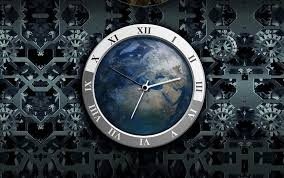
The Fascinating Reason There Are 60 Minutes in an Hour
The division of time into hours and minutes is something we often take for granted, yet the structure of our timekeeping has deep historical roots. Why are there 60 minutes in an hour? This seemingly arbitrary choice is rooted in ancient civilizations and their astronomical and mathematical systems. The journey to understanding this begins with the Babylonians and extends through various cultures and innovations in timekeeping.
The Babylonian Influence: Discover the Ancient Origins
The Babylonians, who lived in Mesopotamia around 2000 BCE, played a crucial role in establishing the 60-minute hour. They developed a sexagesimal (base-60) numeral system, which significantly influenced their mathematics and astronomy. This system was highly advanced and allowed for the convenient division of circles and other geometric shapes.
But why base-60? The Babylonians chose 60 because it is a highly composite number. It has many divisors (1, 2, 3, 4, 5, 6, 10, 12, 15, 20, 30, and 60), making calculations simpler, especially for dividing circles into 360 degrees, another Babylonian legacy. This ease of division is crucial for astronomical observations and creating calendars, which were central to their society.
The Egyptian Contribution to Timekeeping
While the Babylonians laid the groundwork, the ancient Egyptians also contributed significantly to our understanding of time. They divided the day into two 12-hour periods, corresponding to the day and night. This 24-hour day structure was linked to their sophisticated sundials and water clocks, which helped measure the passage of time during daylight and nighttime.
The Egyptians used a duodecimal (base-12) system alongside the Babylonian sexagesimal system. The combination of these systems eventually influenced the Greek scholars, who further refined these ideas.
Greek and Hellenistic Period: Advancing the Knowledge
Greek astronomers and mathematicians, such as Hipparchus and Ptolemy, adopted and expanded upon the Babylonian and Egyptian timekeeping methods. They used these systems to develop more precise astronomical tools and theories. The Greeks particularly admired the base-60 system for its divisibility and incorporated it into their studies of the heavens.
Hipparchus, known for his work on the length of the year and the lunar month, proposed dividing a circle into 360 degrees, with each degree further divided into 60 parts, each part into 60 smaller parts. This division laid the groundwork for the hours, minutes, and seconds we use today.
The Roman Adaptation and the Medieval Era
The Roman Empire, known for its organizational prowess, adopted and adapted the Greek and Egyptian systems. However, their primary contribution was in the development of the mechanical clock during the medieval period. Early mechanical clocks divided an hour into 60 minutes and each minute into 60 seconds, following the sexagesimal system.
These clocks were initially used in monasteries to regulate prayer times but soon spread throughout Europe. The adoption of the mechanical clock cemented the 60-minute hour in Western culture.
The Influence of Astrology and Navigation
Astrology and navigation also played significant roles in standardizing the 60 minutes in an hour. Astrologers used the 360-degree circle and its divisions to chart celestial movements, which directly influenced timekeeping.
Navigators, especially during the Age of Exploration, relied on precise time measurements to determine longitude at sea. Accurate timekeeping was essential for determining a ship’s position, and the division of hours into 60 minutes and minutes into 60 seconds provided the necessary precision.
Modern Implications and Continuity
Today, the 60-minute hour is an integral part of our daily lives, embedded in our clocks, schedules, and technology. The historical journey from the Babylonians to the modern world highlights the remarkable continuity and adaptability of ancient innovations.
The 60-minute hour’s resilience can be attributed to its practicality and historical momentum. While alternative systems, such as decimal time, have been proposed (notably during the French Revolution), they have not gained widespread acceptance. The sexagesimal system’s deep integration into global timekeeping practices and its historical roots make it a robust standard.
The Practicality of the Sexagesimal System
One of the key reasons the 60 minutes in an hour has endured is its practicality. The number 60, with its numerous divisors, allows for easy and accurate division of time. This flexibility is crucial in various applications, from scientific calculations to everyday scheduling.
Moreover, the sexagesimal system’s historical roots have provided a stable foundation for timekeeping. The consistency of using a system that has been in place for millennia adds to its reliability and acceptance worldwide.
Conclusion: The Legacy of Ancient Innovations
The existence of 60 minutes in an hour is not a random choice but a testament to the ingenuity of ancient civilizations. From the Babylonians and their base-60 system to the Egyptians’ dual 12-hour day and the Greeks’ astronomical advancements, each contributed to the framework of our modern timekeeping.
Understanding why there are 60 minutes in an hour invites us to appreciate the legacy of ancient innovations and their enduring impact on our daily lives. This historical journey through time reveals the interconnectedness of human knowledge and the remarkable foresight of our ancestors.
In conclusion, the 60-minute hour is a symbol of our shared heritage, a practical tool born from necessity and refined through centuries. As we continue to measure our days and moments, we are, in essence, keeping time with the ancients.
By uncovering these ancient origins, we gain a deeper appreciation for the complexity and continuity of human ingenuity in our measurement of time.
Must Read: Unveiling Earth’s Secrets: The Inspiring Journey of Cameron Patterson